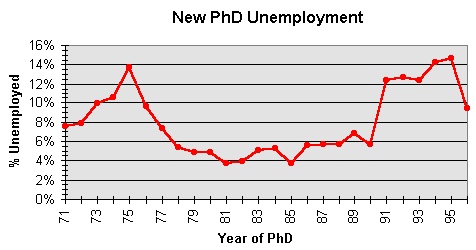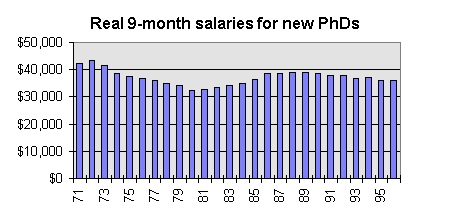Young mathematicians have been facing dismal job prospects throughout the nineties. Spring unemployment rates for new Ph.D.s have fallen for the first time since 1990 to 9.4% in 1996. These unemployment figures tell only part of the story. 2.5% of the new Ph.D.s, after spending 5-7 years working on their degree, were not seeking employment at all. Of the Ph.D.s who had found employment in the spring of 1996, 3.2% were employed only part-time, and 6.9% were employed at the same institution that granted their degree. All in all, as of May 1996, one in five new Ph.D.s was either under- or unemployed.

Spring unemployment rates for new math Ph.D.s, AMS-IMS-MAA Annual Survey, First Report
The 5% reduction in unemployment between 1995 and 1996 is not due to improvement in the academic job market. In fact, the number of new Ph.D.s employed by U.S. academic institutions decreased by 6% from 1995 levels. The explanation is that the supply of Ph.D.s decreased. While there were 64 fewer Ph.D.s still seeking employment in the spring of 1996 than in 1995, it should be noted that there were 73 fewer Ph.D.s granted in 1996.
Graduate programs that are making a difference
